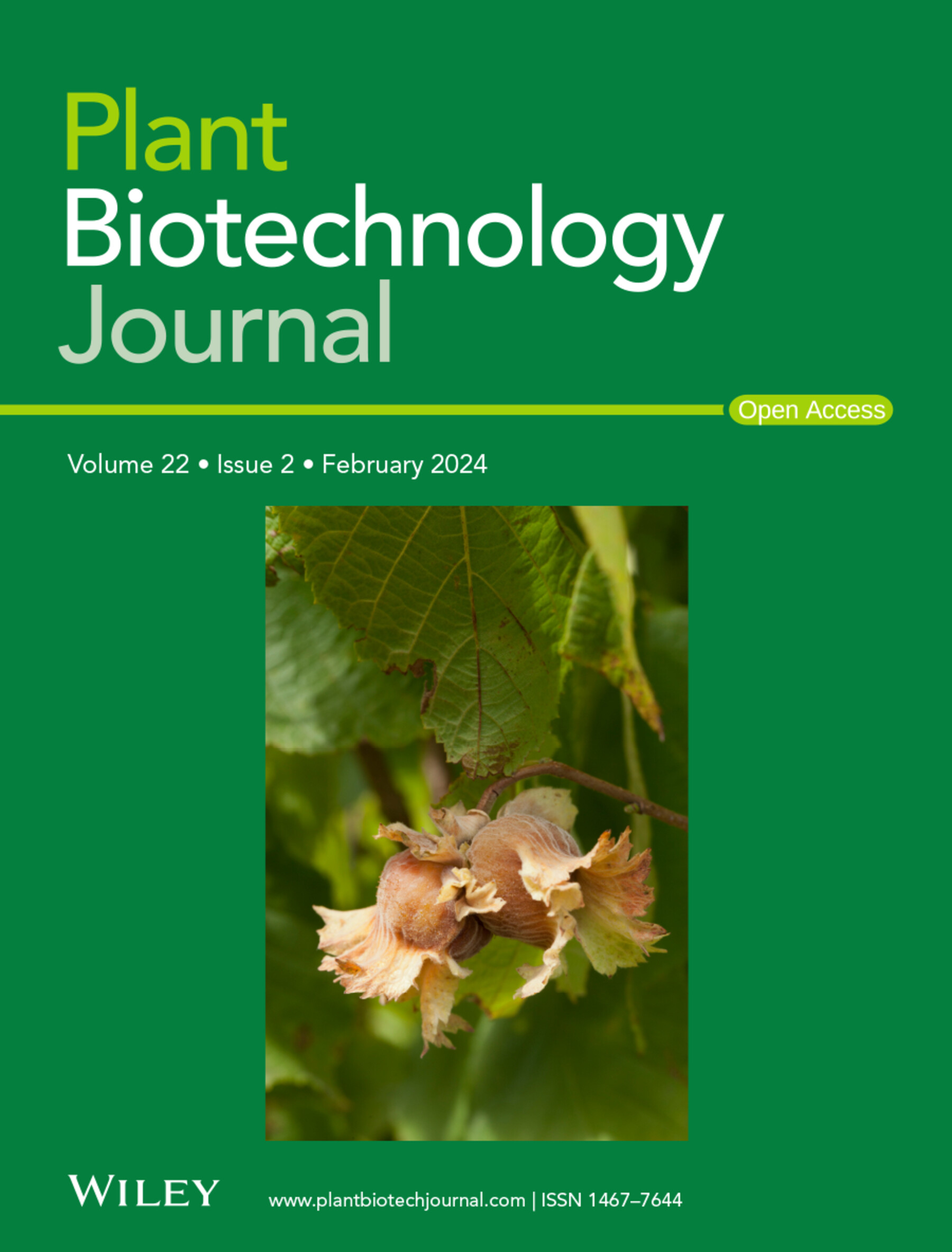Epigenetic regulation modulates seasonal temperature-dependent growth of soybean in southern China.
IF 10.1
1区 生物学
Q1 BIOTECHNOLOGY & APPLIED MICROBIOLOGY
引用次数: 0
Abstract
Epigenetic variations, including DNA methylation and small RNAs, are crucial for plant stress adaptation. However, their association with soybean adaptation to natural environments remains unclear. Through multi-omics analyses, we investigate soybeans from distinct geographical regions (Northern China: HH43, Southern China: HX3, and Wm82) and grown under contrasting South Winter (SW) and South Summer (SS) conditions in China. Transcriptomic clustering classifies soybeans into two distinct groups based on SW and SS. Methylome demonstrates increased CHH methylation in SW, accompanied by HDA6 up-regulation, leading to chromatin compaction and transcriptional repression. Substantial Copia retrotransposons and DNA transposons are also repressed in SW. Interestingly, DNA methylation predominantly influences down-regulated/up-regulated COR genes for HH43 and HX3 through increased/decreased DNA methylation, respectively. In contrast, lower CG/CHG methylation in SW coincided with reduced DNA methyltransferases expression. Notably, non-CG methylation contributes more to DSR in adaptive traits under selective pressure. Such as the E2 domesticated gene exhibits lower CHG methylation within the gene body region and down-regulated expression in SW for HH43. Furthermore, 22-nt siRNA are substantially degraded in SW, and GmDCL2a/2b mutation results in increased plant sensitivity to low temperatures. These highlight the dynamic interplay between DNA methylation, small RNAs and gene expression in soybean adaptation to natural environments.表观遗传调控对南方大豆季节性温度依赖性生长的影响。
表观遗传变异,包括DNA甲基化和小rna,是植物适应逆境的关键。然而,它们与大豆适应自然环境的关系尚不清楚。通过多组学分析,研究了中国不同地理区域(华北:HH43,华南:HX3和Wm82)在南冬(SW)和南夏(SS)条件下生长的大豆。基于SW和SS的转录组聚类将大豆分为两个不同的类群。甲基组显示SW中CHH甲基化增加,伴随着HDA6的上调,导致染色质压实和转录抑制。大量的复制反转录转座子和DNA转座子也在SW中受到抑制。有趣的是,DNA甲基化主要通过增加/减少DNA甲基化分别影响HH43和HX3的下调/上调COR基因。相反,SW较低的CG/CHG甲基化与降低的DNA甲基转移酶表达一致。值得注意的是,在选择压力下,非cg甲基化对适应性性状的DSR贡献更大。如E2驯化基因在HH43的基因体区CHG甲基化较低,在SW中的表达下调。此外,22-nt siRNA在SW中被大量降解,GmDCL2a/2b突变导致植物对低温的敏感性增加。这些研究突出了大豆适应自然环境过程中DNA甲基化、小rna和基因表达之间的动态相互作用。
本文章由计算机程序翻译,如有差异,请以英文原文为准。
求助全文
约1分钟内获得全文
求助全文
来源期刊

Plant Biotechnology Journal
生物-生物工程与应用微生物
CiteScore
20.50
自引率
2.90%
发文量
201
审稿时长
1 months
期刊介绍:
Plant Biotechnology Journal aspires to publish original research and insightful reviews of high impact, authored by prominent researchers in applied plant science. The journal places a special emphasis on molecular plant sciences and their practical applications through plant biotechnology. Our goal is to establish a platform for showcasing significant advances in the field, encompassing curiosity-driven studies with potential applications, strategic research in plant biotechnology, scientific analysis of crucial issues for the beneficial utilization of plant sciences, and assessments of the performance of plant biotechnology products in practical applications.
 求助内容:
求助内容: 应助结果提醒方式:
应助结果提醒方式:


